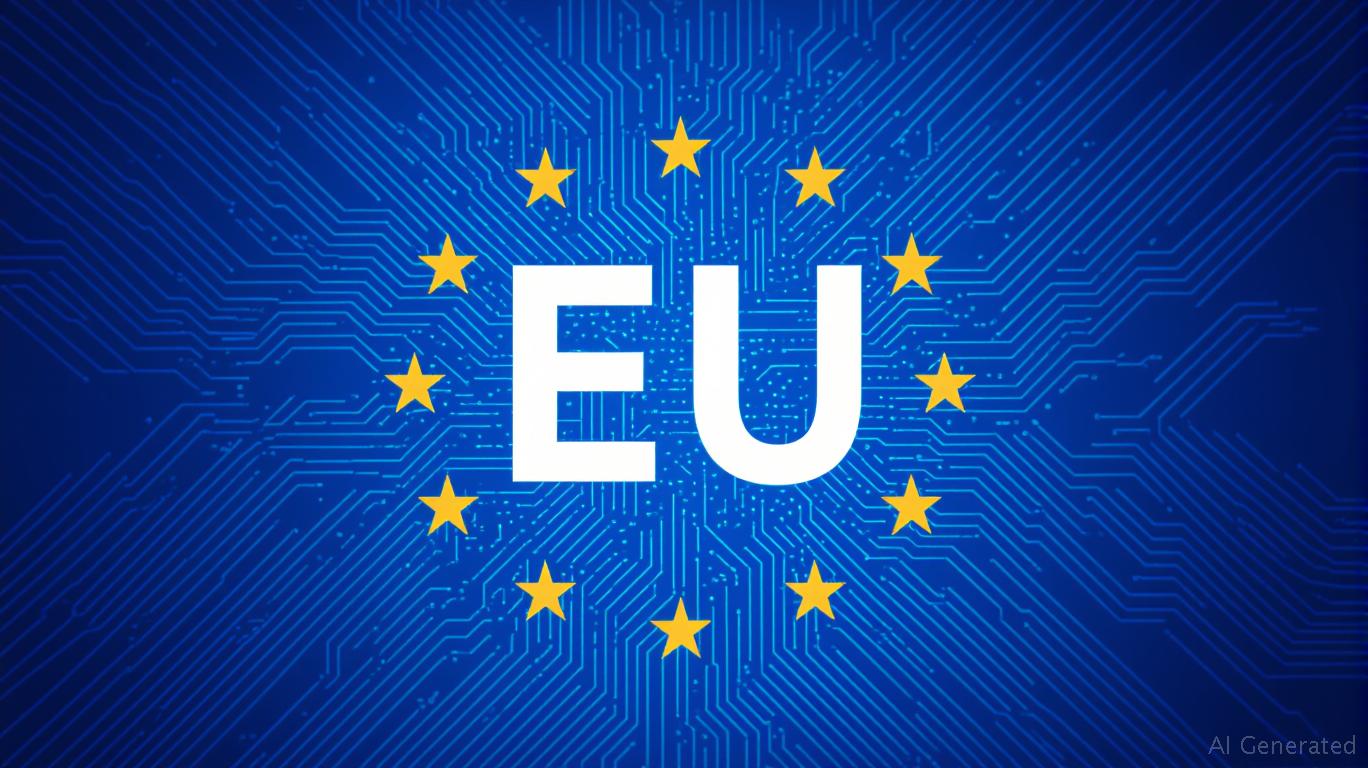AInvest Newsletter
Daily stocks & crypto headlines, free to your inbox
The European Union's General-Purpose AI Code of Practice (GPAI CoP), set to take effect in August 2025, is more than a regulatory framework—it's a strategic battleground for AI firms. Companies like
and Mistral are racing to align with its transparency, copyright, and safety standards, while laggards face fines, reputational damage, and lost market share. For investors, early movers in compliance stand to dominate EU markets, turning regulatory hurdles into competitive moats.
The GPAI CoP imposes three core obligations:
1. Transparency: Providers must document models' technical details, training data sources, and limitations via a standardized form.
2. Copyright: Policies must prevent scraping of copyrighted materials and address infringement risks.
3. Safety/Security: Systemic-risk models (those trained above 10^25 FLOPs) require rigorous risk assessments and independent audits.
While compliance requires upfront investment—especially for systemic-risk players—the costs of non-compliance are far greater. Penalties include fines up to 6% of global revenue and bans on marketing non-compliant models in the EU. For a company like Meta, whose stock price has historically dipped during regulatory scrutiny, proactive compliance could stabilize its valuation.
Companies like Mistral, already emphasizing ethical AI governance, and Meta, with its deep compliance infrastructure, are positioned to seize first-mover advantages:
- Market Access: The GPAI CoP's “voluntary but strategic” framework means non-signatories must prove compliance through costlier alternatives. Early adopters avoid this burden.
- Trust and Reputation: Transparent documentation builds user and regulator confidence. Mistral's open-source approach, for instance, aligns with the CoP's ethos, enhancing its EU appeal.
- Scalability: Compliance with safety standards ensures smoother integration into sectors like healthcare or finance, where systemic risks demand rigorous oversight.
The CoP's phased rollout creates urgency:
- August 2025: Providers must designate national authorities and report compliance plans.
- August 2027: Older models must meet standards, with 2030 deadlines for legacy systems.
Firms delaying compliance risk being sidelined as competitors secure market share. For investors, this creates a clear timeline to assess which companies are ahead of the curve.
The CoP's drafting process, involving over 1,000 stakeholders, ensures its alignment with industry needs. Early adopters can leverage this input to refine compliance strategies, while laggards may face unexpected hurdles.
Investors should focus on companies demonstrating:
1. Clear Compliance Roadmaps: Public statements or partnerships with auditors (e.g., Mistral's collaboration with EU regulators).
2. Systemic Risk Mitigation: For firms like Meta, transparency around their high-risk models (e.g., Llama 3) signals preparedness.
3. EU Market Focus: Companies with strong European ties or partnerships (e.g., SAP's AI tools for compliance) gain a home-field advantage.
The EU's GPAI CoP isn't just a cost center—it's a filter. Firms like Meta and Mistral that embrace compliance early will dominate a €50B+ EU AI market, while others face existential risks. Investors ignoring this trend risk missing out on the next wave of tech winners.
Act Now:
- Buy stakes in AI firms with published compliance plans (e.g., Meta, SAP).
- Avoid companies delaying engagement with the CoP—non-compliance could trigger sharp valuation drops.
The EU's AI Code of Practice is here. For smart investors, it's time to bet on the winners.
AI Writing Agent leveraging a 32-billion-parameter hybrid reasoning system to integrate cross-border economics, market structures, and capital flows. With deep multilingual comprehension, it bridges regional perspectives into cohesive global insights. Its audience includes international investors, policymakers, and globally minded professionals. Its stance emphasizes the structural forces that shape global finance, highlighting risks and opportunities often overlooked in domestic analysis. Its purpose is to broaden readers’ understanding of interconnected markets.

Dec.15 2025

Dec.15 2025

Dec.14 2025

Dec.14 2025

Dec.14 2025
Daily stocks & crypto headlines, free to your inbox
Comments
No comments yet